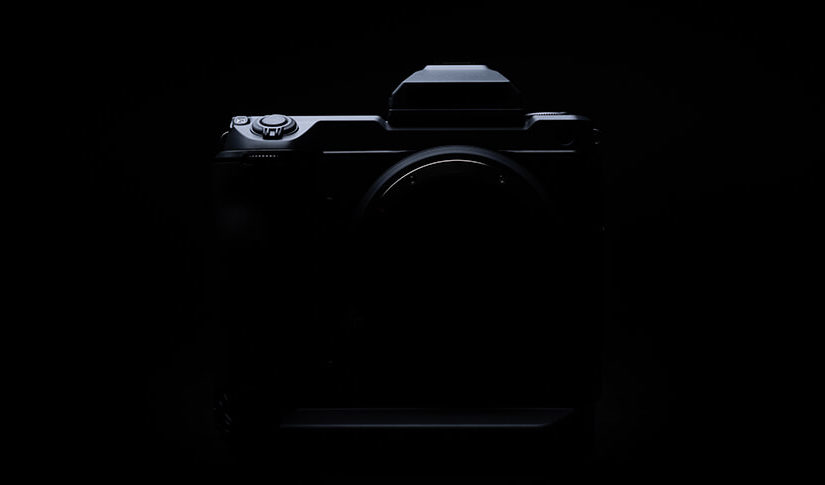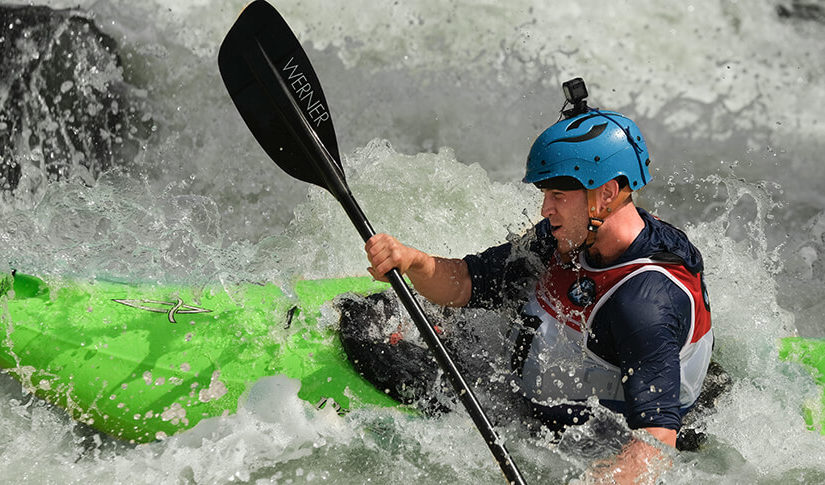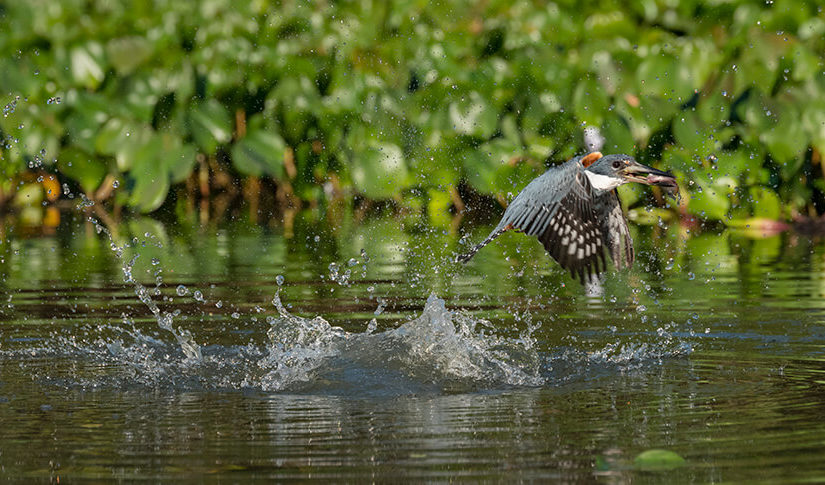
 7 minute read
7 minute read
Pick the Perfect X Series Kit for Your Next Trip
How to choose and pack gear is a defining aspect of travel photography. It all starts with accepting that you can’t take everything
That realisation can lead to a sense of nervousness – because we all know that feeling when you miss a great photo because you didn’t have the right focal length – but think of it as actually freeing you up to work in a more dedicated way. If you have too many options, not only can a trip turn into a stock-taking and bag-carrying exercise, you may spend more time thinking about how to shoot, than actually doing it.
No matter the length of trip, think about what and how you intend to shoot, then pack accordingly, trying not to double up on focal lengths. If it’s a broad mix of subjects – often the case with travel – a zoom, like XF18-135mmF3.5-5.6 R LM OIS WR, is a great choice for almost any trip. It’s light, compact and covers all sorts of subjects.

Image © Onyi Moss
If you know you’ll be shooting at night, or in low-light situations, you could augment that with a fast, light and portable prime lens, like XF35mmF2 R WR or XF23mmF2 R WR. For interiors, like churches and museums, consider a compact ultra-wide lens, such as XF10-24mmF4 R OIS WR. Or, if capturing exotic wildlife, try a streamlined telephoto zoom, like XF70-300mmF4-5.6 R LM OIS WR. You can check out our Help Me Choose quiz to really refine your requirements.
But as every X Series lens and body is designed to be as light and portable as possible, the choices you make come down to your agenda and the length of the trip. All adventures are different, but below are some ideas for a variety of travel occasions.
What to take on a day trip
A day trip will centre on a specific activity or place, so along with a single body, your lenses and accessories should be easy to define. Try a single zoom – like the XF16-80mmF4 R OIS WR or XF18-135mmF3.5-5.6 R LM OIS – which will cover all manner of subjects. If you know where you’re going and the types of photos you want to take, relying on something like the XF70-300mmF4-5.6 R LM OIS WR or XF50-140mmF2.8 R LM OIS WR will give you the best quality with the greatest reach.
You may not always want to have a larger zoom with you though so, alternatively, stick to a couple of small prime lenses alone. XF16mmF2.8 R WR and XF35mmF2 R WR make a great pairing, giving both wide angle and standard views to tell the story of your day. If considering portraits, adding XF50mmF2 R WR won’t add much weight to your bag, either. Consider a screw-on close-up filter instead of a dedicated macro lens to save space.
Accessories wise, it’s unlikely you’ll need a charger, but a spare battery is always a good idea. If your X Series camera supports USB charging – which all the latest models do – remember the cable and you’ll be able to plug in at a cafe.
Finally, a small travel tripod, or even a miniature model, will expand creative options, but make sure you can strap it to your bag without too much of a burden. Add a strong ND filter to help if you want to shoot long exposures, but remember to pack some stepping rings – adapters which change the filter’s thread size – to use across lenses with different filter sizes.
What to take on a weekend shoot
You wouldn’t take a massive suitcase full of clothes on a weekend away, so apply the same logic to camera gear. Work out the size of the camera bag you’re willing to carry around all weekend, and use that as a guide. This will force you to be selective – and if you run out of room, that’s that! Remember, you’ll need non-photographic gear in your backpack, too.
A backpack will let you carry heavier lenses in greater comfort than a shoulder bag, so you can opt for the faster glass in the X Series range, if you prefer. For instance, the XF16-55mmF2.8 R LM WR will have you covered for most opportunities, and its F2.8 aperture lets you work more easily in low-light. With more carrying space, you can also consider adding a second body to your weekend kit, letting you mount two lenses at once and be more responsive to opportunities. Depending on the size of the bag, you may also have room for a macro lens, like XF60mmF2.4 R Macro – perfect for picking out detail and adding texture and variety to any travel story.
For the extended shooting of a weekend break, pack a charger and at least one extra battery. You may also need a spare memory card or two. Your backpack should let you strap on a lightweight tripod for long exposures and sharper low-light images, with space for a selection of filters; try ND0.6, ND1.2 and ND3.0 for a range of light-stopping power, along with a polarising filter, and graduated NDs if intending to photograph landscapes.
If you want to share images on the go, remember that all you need is the FUJIFILM Remote Camera App, which connects to your X Series camera, letting you quickly transfer JPEGs ready for upload.
What to take on a full photo holiday
On a longer trip, you’d naturally expect to take more gear. But that doesn’t mean carrying it all with you every day! The great thing about a longer stay is that you can pick and choose what to take out, while stowing the rest at base. Transport your gear in a large rucksack, or roller case, but add a smaller rucksack or shoulder bag for specific trips.
This kind of planning opens up far more shooting opportunities, and lets you pack heavier gear. For instance, you can make the most of the X Series fast zooms, including the XF50-140mmF2.8 R LM OIS WR and the XF10-24mmF4 R OIS WR for a wider aspect. If you can find room for a specialist lens, like the XF80mmF2.8 R LM OIS WR Macro, you’ll give your images a distinctive look. But perhaps a lighter lens option, like any of the F2 primes, will make your shoulders thankful if you’re planning lots of day visits and tours of the local area.
Packing a second, or back-up, body is a good idea, too, especially if this is a once-in-a-lifetime trip. And consider an accessory grip, like the VG-XT4, if your camera supports one, which will keep you shooting longer without changing batteries.
Make sure to pack a charger, a couple of spare batteries, extra memory cards, and a lens cloth and cleaning solution – the latter of which will need to meet any travel restrictions, of course. Using a larger bag as a base for your gear also means you can take a laptop and edit photos while you’re away. You’ll be able to take a larger tripod, too, if you require, along with a full suite of filters. If travelling overseas, another good idea is a four-gang extension lead, meaning you can run multiple devices, without a travel adapter for each.

Or take a holiday from your regular gear
A change is as good as a rest, they say. So, while we often think of a trip as the perfect time to make the most of our cameras, lenses and other photo gear, have you considered taking a holiday from your gear?
Of course, we don’t mean going away without a camera at all – that would be madness! But how about just taking a camera that you love, but haven’t used for a while? Or one that makes you shoot in a different way? It’s something that can freshen your approach and add to the enjoyment. Perhaps rent a different X Series camera or lens from our camera hire service?
For instance, if you normally shoot with an X Series body, like the X-S10 or X-T4, why not try out a fixed lens compact like the X100V, which will see you working in a different way? Alternatively, if you usually use fixed lenses, experience the versatility of a travel zoom, like the XF18-135mmF3.5-5.6 R LM OIS WR.

Image © Pete Elliott
Find that balance between challenging yourself and relying on your best kit in unknown scenarios, and whatever you do, don’t forget to share your experiences with us by tagging #RepostMyFujifilm
























































